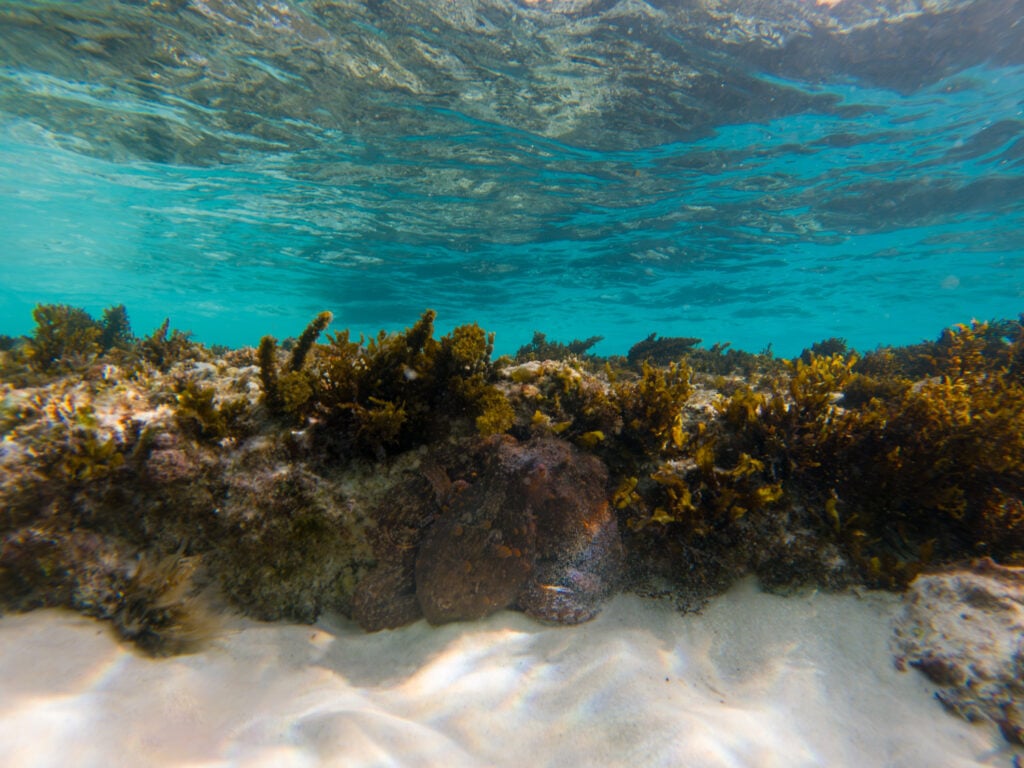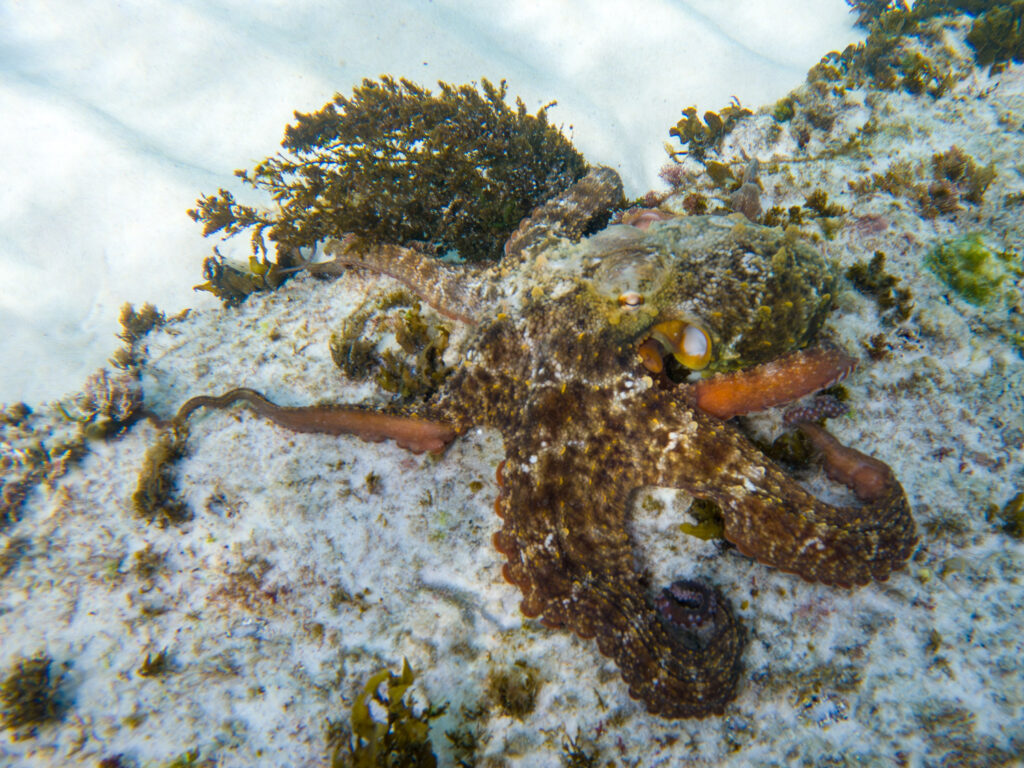Let’s talk about one of the most fascinating creatures you will encounter on your adventures: the Common Sydney Octopus. This octopus, which goes by the scientific name of Octopus tetricus, is as interesting as it is beautiful, showcasing a blend of curious behaviours, adaptability, and intriguing lifestyle.
Table of contents
Identifying the Common Sydney Octopus
Identifying the Common Sydney Octopus is quite straightforward. Adults typically reach a size of about 80 centimetres, excluding their arms. Their bodies are generally a robust and vibrant blend of brown, orange, and cream colours, with fascinating, almost human-like eyes that give them a captivating presence.
However, don’t always rely on colour alone to identify them as these creatures are known for their colour-changing abilities. They use this fantastic skill to blend in with their surroundings, effectively becoming invisible to both prey and predator. Watch out for unusual rocks or corals moving – they might not be what they seem at first glance!

Snorkelling with the Common Sydney Octopus
Snorkelling with the Common Sydney Octopus is a unique experience. These octopuses are generally curious but shy, often seen hiding or camouflaged in their rocky habitats. When you come across one, make sure to keep a respectful distance. Octopuses are sensitive creatures, and too close an approach may cause them to retreat into their den. If there is no shelter nearby, and you get too close for comfort they might use their famous ‘ink’ to create a diversion and swim away.
Never try to touch or handle a Common Sydney Octopus, as this can cause them unnecessary stress. Just enjoy the beautiful dance they perform in the water, with their arms undulating in the current. Be patient and still, and you might be treated to a colour-changing display!
Distribution and Conservation Status
The Common Sydney Octopus is endemic to Australia, found mainly in coastal regions of New South Wales inhabiting the subtidal and intertidal zones. Due to climate change it is known to be migrating down to Tasmania. Its favoured habitats include rocky reefs and seagrass meadows.
In terms of conservation, the Common Sydney Octopus is not currently listed as threatened. However, like all marine life, it faces potential threats from habitat loss, pollution, and climate change.
Like many reef dweller, this octopus is a night time hunter. So the best chance to spot one snorkelling is at dusk or dawn. Try your luck at Gordons Bay, Shelly Beach, or further south around Jervis Bay. We have spotted the common Sydney Octopus at all of these locations.
Behaviour and Character
As nocturnal creatures, Common Sydney Octopuses are most active at night. They are solitary animals, and each one maintains a den which it ventures from to hunt at night. They are incredibly intelligent, exhibiting problem-solving skills and unique behaviours such as tool use, which is rare among invertebrates.
Each year, around late spring, there’s an increase in the number of Common Sydney Octopuses observed. This is their breeding season when females lay eggs in their dens and guard them diligently. It’s a special time that emphasises the continual circle of marine life.
In conclusion, the Common Sydney Octopus is a unique and intriguing part of Australia’s rich marine life. Snorkelling in their presence is a privilege and offers a chance to understand and appreciate their complex behaviours and fascinating biology. Always remember to observe respectfully and help maintain their natural habitats for future generations to enjoy as well.

Distribution
Temperate waters of southeast Australia.
Facts
Max Body Size: 80cm
Max Arm Span: 200cm
Lifespan: 11 months
Depth: 0-30m
Risk and Safety
No risk, will avoid contact.
Conservation
IUCN Status: Least Concern